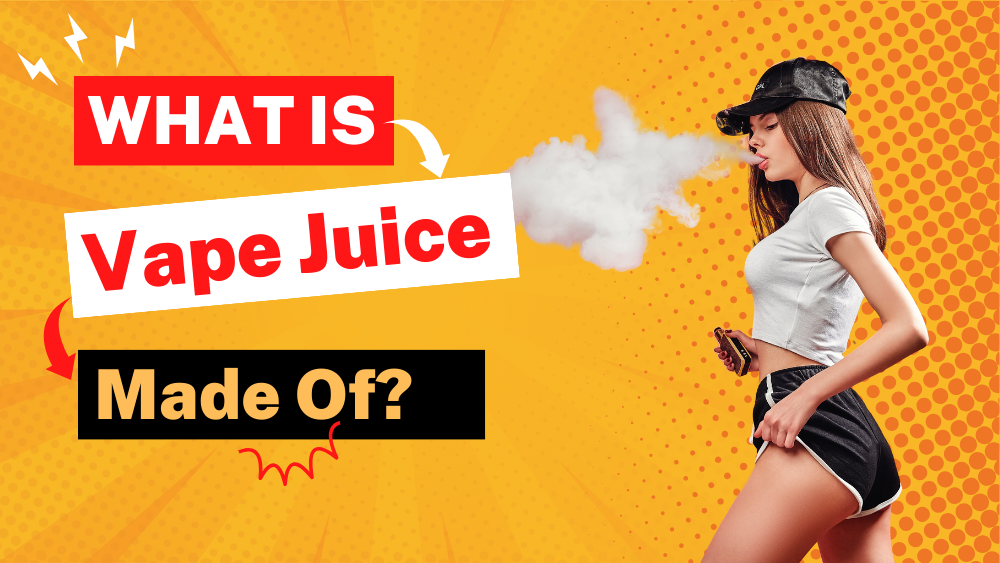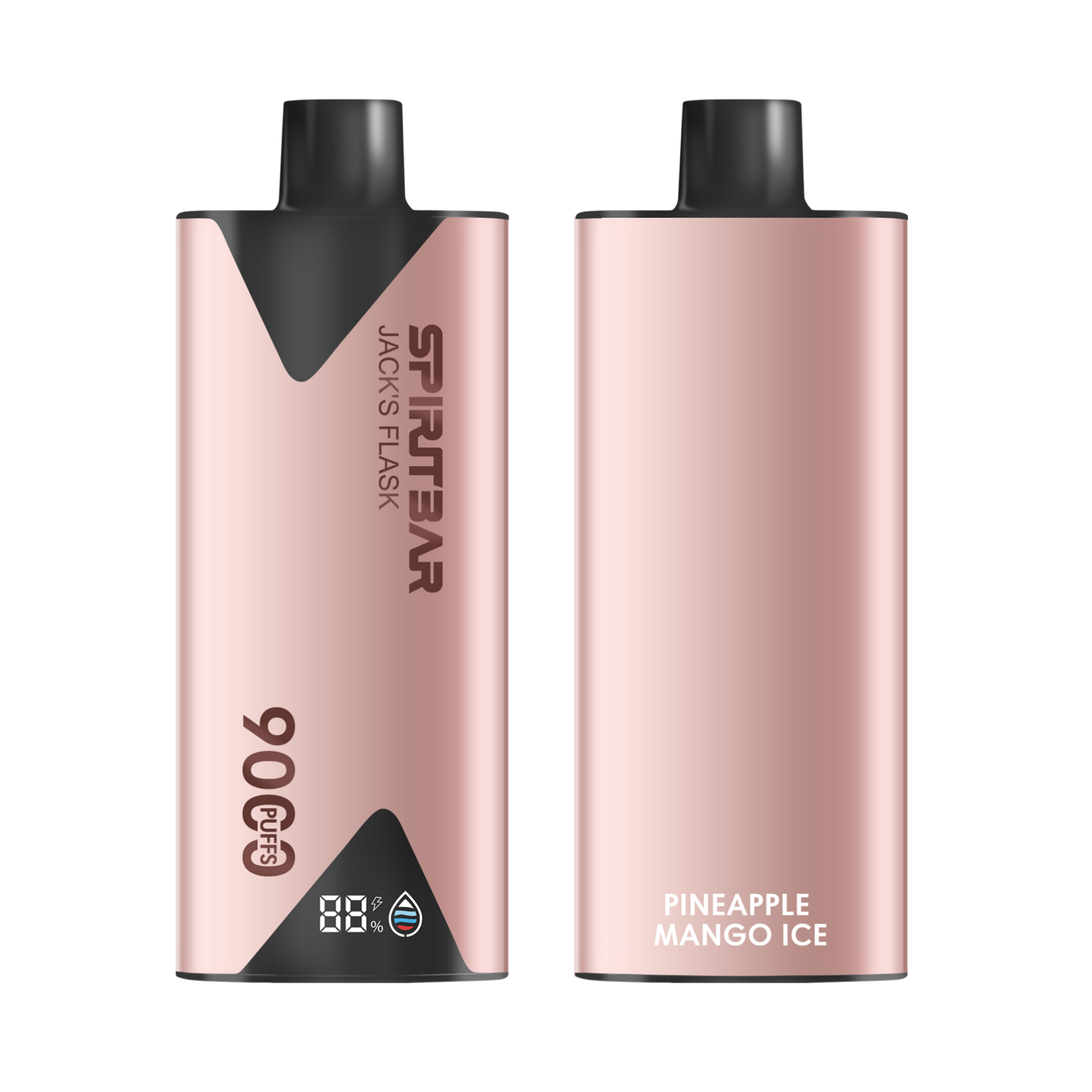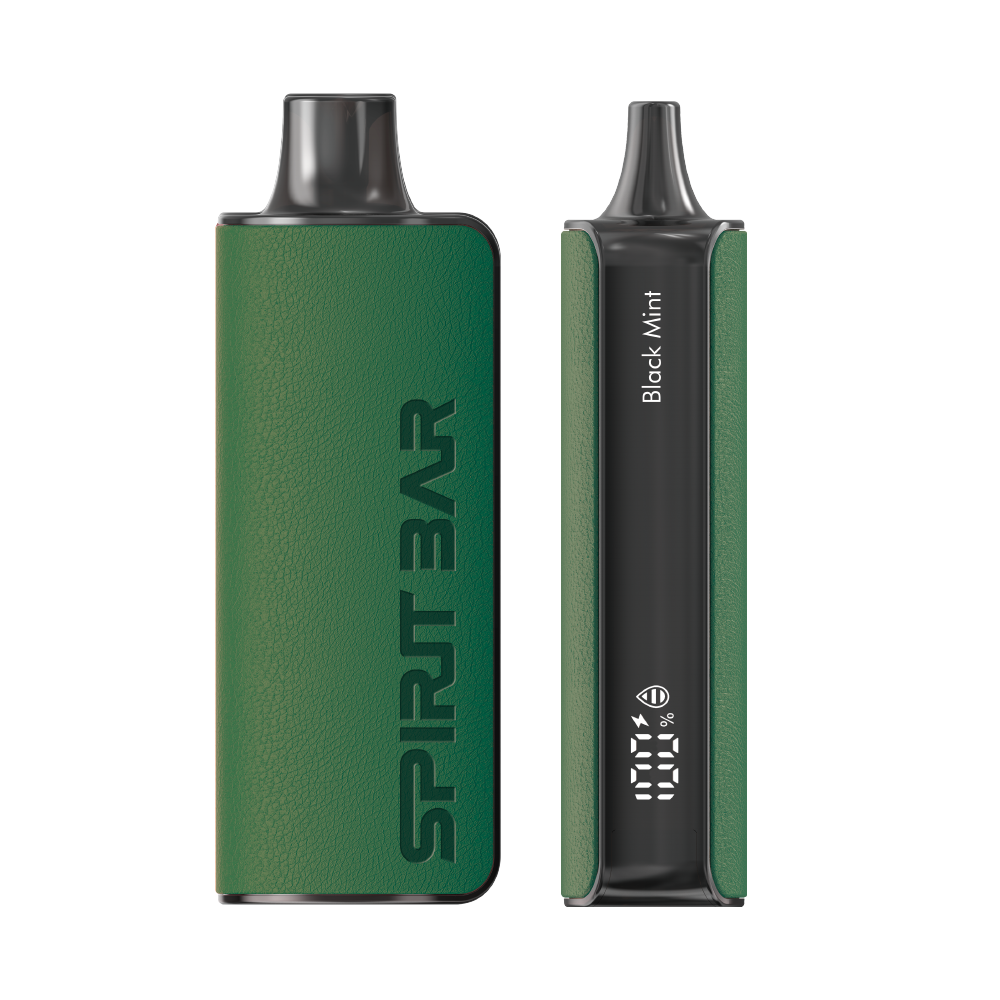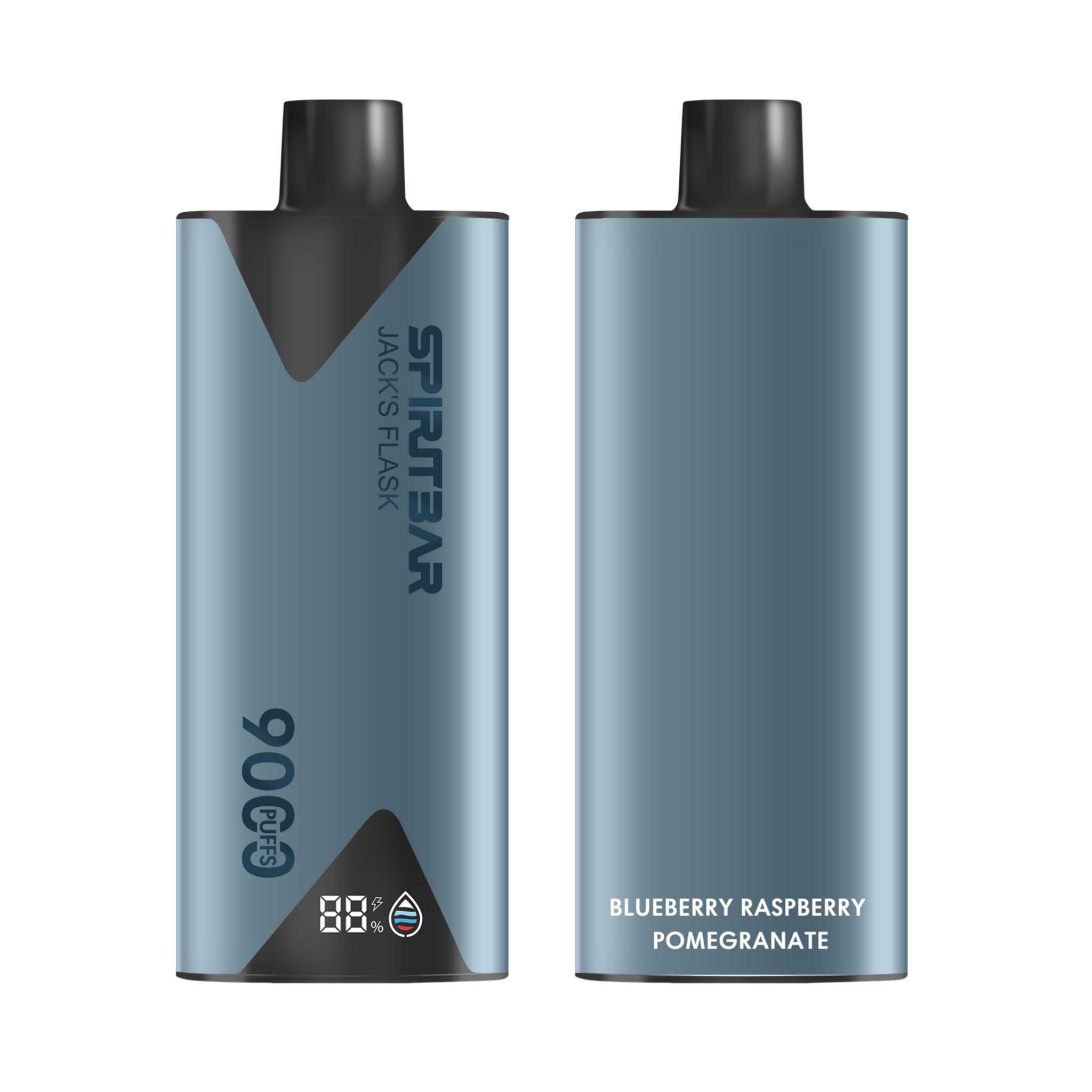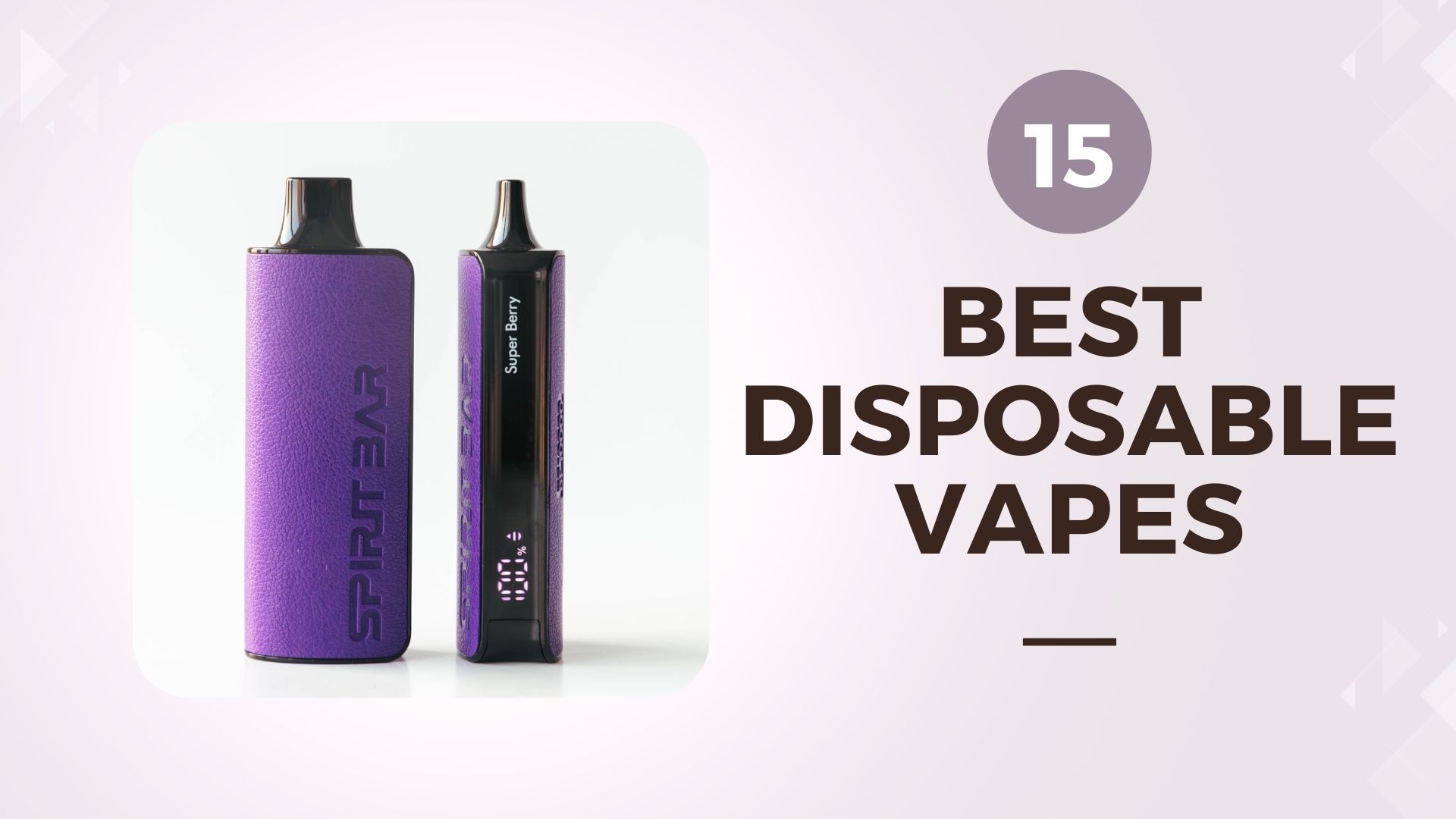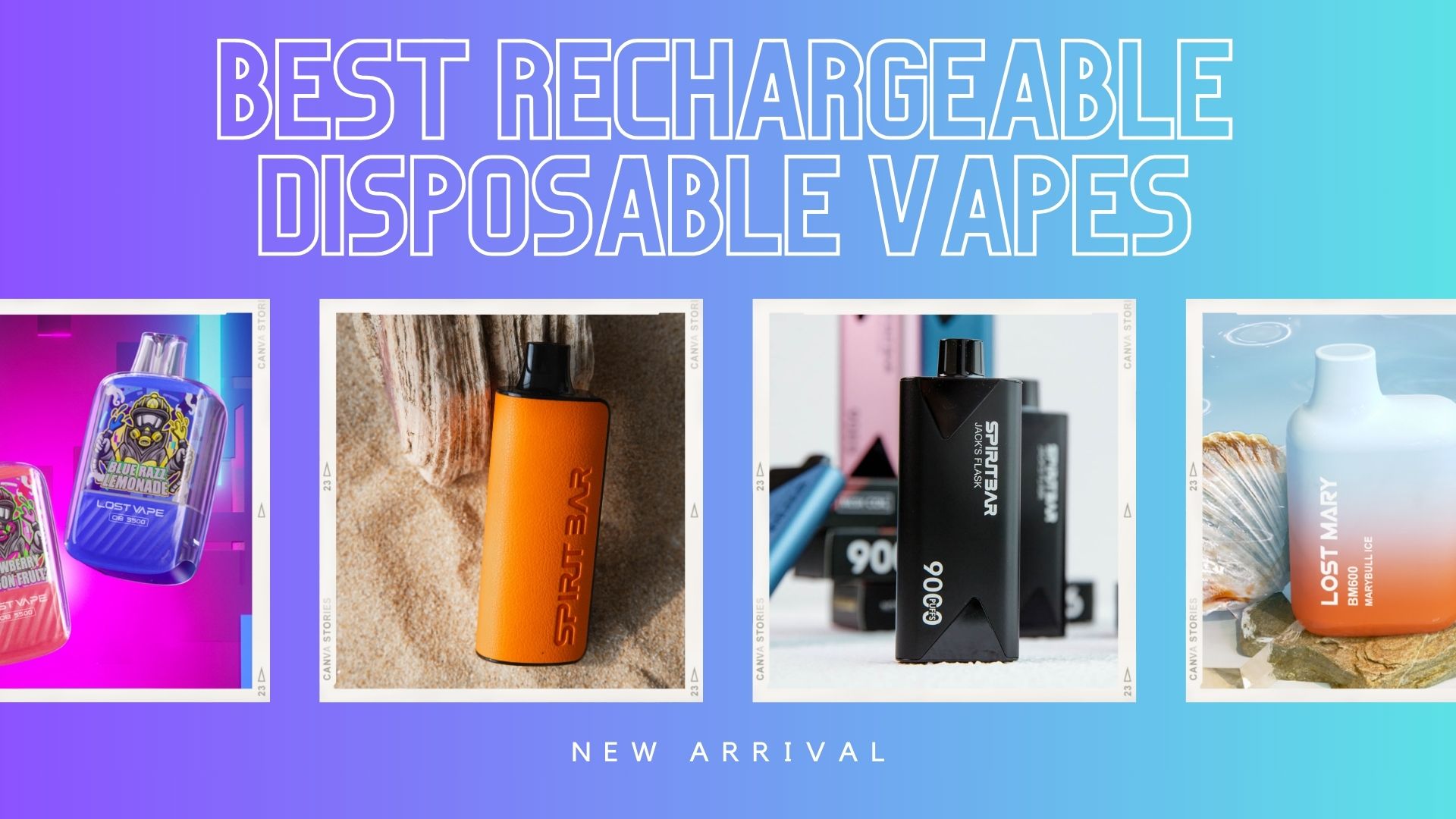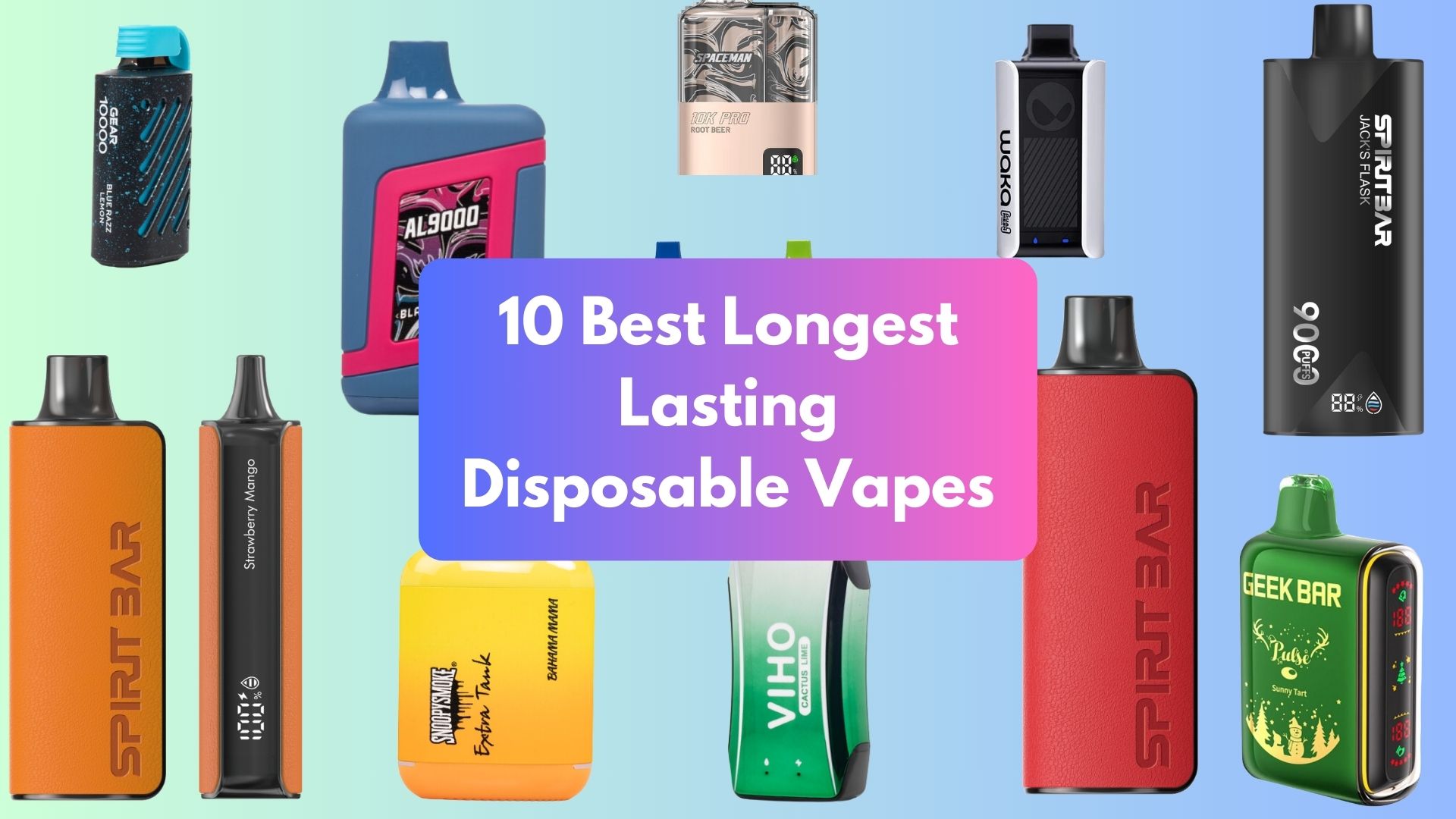When you vape, you inhale the aerosols from a heated liquid and exhale pretty puffs of cloud-like vapor. It’s safer than smoking because it doesn’t have tar, formaldehyde, carbon monoxide, and many of the other harmful ingredients in cigarettes. The fluid that you vape is called e-juice or e-liquid. Let’s discuss the main vape juice ingredients and how they work.
What’s in Your Vape Juice?
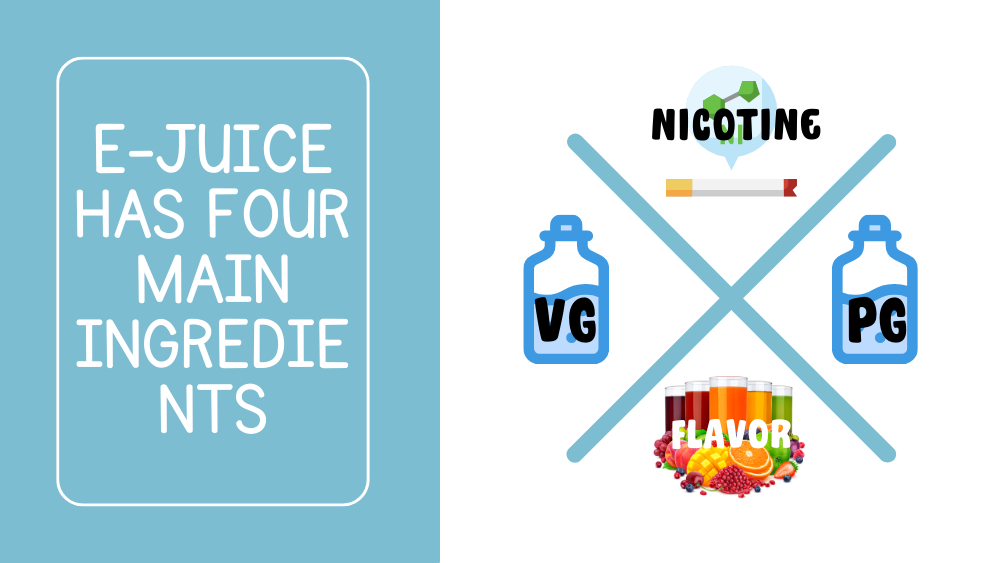
E-juice has four main ingredients – PG (propylene glycol), VG (vegetable glycerine), flavor, and nicotine, which is optional. When you inhale, the battery on your vape heats the coil and makes it red hot. This heat transfers to the soaked wick, evaporating the e-liquid into vapor or aerosols. You breathe these in, hold for a few seconds, and expel plumes to enjoy your hit.
Because vape juice evaporates instead of combusting, it doesn’t turn into ash, which means it doesn’t release the toxic by-products we associate with cigarettes, pipes, cigars, or tobacco in general. But you can still buy tobacco-flavored vapes with a harsh throat hit if you want to safely simulate the smoking experience. Some vapers opt for TFN or tobacco-free nicotine.
This is lab-created artificial nicotine. It’s fully synthesized by scientists e.g. by reacting the ethyl nicotinate ester of Vitamin B3 aka nicotinic acid aka niacin. TFN can be packaged as salt nicotine or freebase. (More on that later.) It lacks some of the naturally occurring toxic chemicals in nicotine-bearing plants. Let’s look closer at individual vape juice ingredients.
$36 $12.99 (Free Shipping, 2-6 Days Delivery)
- Up to 9000 Puffs
- Stylish pirate flask-shaped metal body
- E-liquid & Power Screen Display
- 2-6 days delivery
Vape E-juice ingredients
1. Propylene Glycol (PG)
Some people think vaping is toxic because vape juice ingredients have scary-sounding names. But many of these chemicals are derived from natural sources. And if you take a moment to look them up, you’ll realize they’re far more benign. Alpha Ionone makes things smell like berries or cherries. And dihydrogen monoxide (DHMO) is just a parody of water.
PG falls into that category. You make it by processing alcohol sugar. It does produce a little ‘smoke’ or vapor when heated, but not as much as VG. The fumes are smaller because PG is thinner than VG. For reference, PG is sometimes used to make stage smoke during live performances. An alternative is to use a carbon dioxide smoke machine to release dry ice.
What PG Does in Vapes
When you heat the vape juice, the thinner PG will atomize sooner and produce a lighter waft of plumes than VG. It’s slightly thicker than water but dissolves substances faster, making it an excellent solvent. That’s why PG’s primary purpose as a vape juice ingredient is to hold the nicotine and flavor. You might see PG listed as Trimethyl Glycol or Dihydroxypropane.
Outside e-liquid, PG is used as an anti-microbial moisturizer in beauty products. Being an efficient emulsifier, it facilitates the full mixing of all the particles, oils, and fluids blended to make your vape juice. More PG means more pop in your flavor and a harsher throat hit. Some people enjoy this throwback to their smoking days, so they opt for high-PG vape juice.
2. Vegetable Glycerine (VG)
For cloud chasers, VG (sometimes spelled without that final ‘e’) is the most important ingredient. It’s what makes those huge fumes when you exhale, and while it looks quite dramatic, it completely disappears within a few seconds. Other options include aqueous glycerine, which is professionally pre-mixed with distilled water. (Don’t try it at home!)
First, let’s go over the basics. Glycerine is a brand name, just like Vaseline. But Vaseline is petroleum jelly and glycerol is the generic name for Glycerine. Glycerine contains at least 95% glycerol. Digging deeper, Vegetable Glycerine comes from plants, and the most popular sources are palm, coconut, or soy. But regular glycerine is from animal fats or petroleum.
Glycerol is classified as a natural ingredient since it’s a soap by-product. When the plant fats are pressurized and boiled with lye or a similar alkali, the oil and water molecules in this mixture fuse to form VG. It pops up as a moisturizer in beauty products, just like PG. Mainly as an alternative for PG allergies since its density deters diffusion so it’s not as good a solvent.
$36 $12.99 (Free Shipping, 2-6 Days Delivery)
- Up to 10000 Puffs
- E-liquid & Power Screen Display
- Mesh Coil
- 2-6 days delivery
The Importance of VG in Vape Juice
Since VG is so thick and syrupy, it needs a heavier wick and a wider coil. They sometimes use mesh coils for that. But VG is a latter-day addition to e-liquids. Early vapes relied on PG, and many disposable pens do too. That’s why they don’t emit the hugely satisfying plumes you’ll get from sub-ohm vaping gear and customized mods. VG also offers a smooth, silky inhale.
The two main functions of VG in e-juice are to make massive clouds and soften the throat hit from nicotine vapes. But since the nicotine itself is infused into PG, a flavored vape with 0% nicotine might be made of VG and flavor without the other two ingredients. In terms of the throat hit (the scratchy feeling from inhaling cigarettes), anything over 60% VG will soften it.
Just like PG, VG is a sugar alcohol with no distinct color or smell. But unlike PG, its palate is vaguely sweet. It’s thicker and denser than PG so it needs more heat to burn. This is partly why sub-ohm vapes work best with VG-heavy sub-ohm e-juice. As a rule, VG and/or PG form the base. You’ll then add flavor and/or nicotine to round out the formula and voilà, e-juice!
3. Food-Grade Flavour Concentrate
The flavors that are used in vape juice are specifically formulated for electronic cigarettes and similar products. You can’t interchange them for food flavors or shisha flavors since the results will differ. Some are single flavors like mint or bubble gum. Others are a fusion of various components e.g. Blueberry Raspberry Pomegranate. It takes practice to mix these.
But even with ‘simple’ flavors like vanilla or bubble gum, various chemicals are combined to get that characteristic scent and palate. For example, pumpkin spice may taste like pumpkin pie, but it’s mostly made from nutmeg, ginger, clove, cinnamon … and (very rarely) pumpkin puree. Similarly, bubble gum contains banana, wintergreen, clove, cinnamon, and pineapple.
Vape flavor concentrates use a combination of artificial flavors, extracts, and preservatives to get that desired variant. Examples include linalool terpenes from citrus fruits or lavender, Tabanone for its tobacco-like fragrance, and Trimethyl pyrazine for its earthy notes of coffee, cocoa, baked goods, chocolate, and nuts. They might also contain oil from seeds and flowers.
Finding Ideas for Vape Flavours
Another tip is to look for vapes that have detailed ingredient lists and Google some of those oddities. For example, Acetyl pyrazine enhances tobacco flavors while Beta-Damascenone is what gives roses their trademark scent. Studying the chemical combinations within these flavor breakdowns can give you thought starters for homemade vape recipes and cocktails.
You can experiment on your own or you can look up flavour names to get an idea of what goes well together. But never use essential oils in your vape – they’re not compatible with the internal vape mechanics. Instead, use customized flavor concentrates that have suitable pre-infused lipids. These flavors often use ethanol for blending and maltol for sugary hints.
If you want to mix up a batch of e-liquid at home, you can order flavor concentrates from vape stores. You can also buy e-juice shots that are built into cocktails. Or get several vape flavors and blend them yourself for a little DIY. This may develop a distinct flavor that can become your signature scent. Use a vape calculator if you want to add some PG and VG to it.
$36 $12.99 (Free Shipping, 2-6 Days Delivery)
- Up to 9000 Puffs
- Stylish pirate flask-shaped metal body
- E-liquid & Power Screen Display
- 2-6 days delivery
4. Optional Nicotine
In the wild, you can find nicotine in plants like tobacco, potatoes, tomatoes, and even eggplants! For vapes, this nicotine is extracted from high-content plants like tobacco. It’s then processed to make it purer and more concentrated. Usually, this takes two forms – nicotine salts and freebase nicotine. Cloud chasers prefer freebase nicotine since it has bigger clouds.
But in higher percentages, freebase nicotine can be harsh. That’s why freebase nicotine is more palatable in lower volumes. Conversely, the flavor in nicotine salts is slightly less vibrant than freebase. It also makes smaller clouds. But nicotine salt offers a gentler throat hit in all concentrations, so it’s a favorite for people with extreme nicotine requirements.
Naturally, nicotine occurs as a salt in plants (no relation to table salt). Freebase nicotine is made by dissolving the nicotine in ammonia, filtering the slurry, then evaporating the alkali. This concentrated freebase has a higher pH and binds better. Conversely, nicotine salt is infused with citric acid or benzoic acid and it hits the bloodstream even faster than freebase.
MTL, DTL, and Wattage
In terms of usage, nicotine salts are ideal for pods and low-powered devices. You’ll probably MTL (mouth-to-lung), meaning you take the aerosols into your mouth first before pushing them back into your lungs. To do this, breathe in extra air through pursed lips or gritted teeth. Or you can do a series of multiple inhales before you exhale, sucking back any puffs that escape.
For freebase nicotine, you can do both MTL and DTL at a higher wattage. The latter – direct-to-lung – is when you extend your diaphragm and take a deep belly breath, sending the vapor straight to your lungs. In Europe, the maximum legal volume of nicotine is 2% or 20mg/ml but in the US and other places, you can go as high as 5% or 50mg/ml of nic salt.
Nicotine shots often come pre-mixed into 100% PG. Or a 50/50 shot of half VG and half PG. When you’re using a vape calculator, factor the pre-loaded base into your math. 20mg/ml or 2% equates to roughly one pack of cigarettes a day. Also, freebase nicotine absorbs slower and lasts longer in your bloodstream, but it oxidizes quicker in storage so it goes bad faster.
What is Vape Juice Made Of?
The four ingredients that make vape juice are vegetable glycerine (VG), propylene glycol (PG), vape flavors, and sometimes nicotine. Other vape juice ingredients include cannabis extracts, but that’s a separate category that we’ll discuss in another article with special tips.
Sometimes, e-juice may have trace elements and preservatives, but VG, PG, flavor, and nicotine are the largest proportions. Freebase nicotine is more alkaline so it’s harsh in high concentrations and delivers a tobacco-like throat hit. Nicotine salt stays gentle, even at 5%.
$36 $12.99 (Free Shipping, 2-6 Days Delivery)
- Up to 10000 Puffs
- E-liquid & Power Screen Display
- Mesh Coil
- 2-6 days delivery
Sharing is caring!
Related posts:
- How to Tell When Your Disposable Vape is Almost Empty? (4 Easy Ways)
- Can Hotels Tell If You Vape? (4 Ways)
- What’s the Best Voltage for THC Carts? (Check Our Charts!!!)
- How Does CBD Vape Make You Feel? (Does It Get You High?)
- How Long Does THC Vape Stay in Your System? (Time Chart)
- What Happens if You Put a Vape in Checked Luggage? (Carry Guides)
- Nicotine Salts vs. Freebase (13 Differences Between Them)
- 8 Steps to Clean a Vape Pen (with Maintenance Tips)
